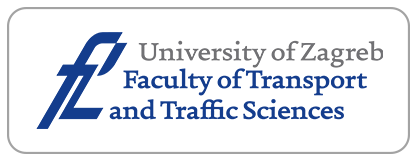A Bus Rapid Transit Timetable Design Method Integrating All-Stop, Short-Turn and Limited-Stop Strategies

Downloads
Bus rapid transit (BRT) operates with an exclusive road environment, specialised platforms and technology-enhanced devices, which allows it to provide a higher quality of service compared with conventional bus transit. However, the temporally and spatially imbalanced distribution of passenger demand leads to a waste of BRT system investment. To improve operation efficiency, this paper presents a timetable-based optimisation method which integrates multiple operational strategies, including all-stop, short-turn and limited-stop services. A rule-based heuristic algorithm is developed to generate operational solutions for the stopping pattern and departure timetable for the analysis time period. The proposed model and algorithm enable detailed considerations of interactions among successive BRT vehicle journeys along with passengers’ boardings and alightings at stations, and the interdependencies between multiple service hours are involved. The method is validated through a real-world case study of the Fengpu Express BRT route in Shanghai, China. Sensitivity analyses are made in response to changes in OD profiles, average boarding and alighting time and maximum total mileage. Results show that the timetable-based multi-operational strategy reduces the total travel time of passengers under the same operational cost, which could facilitate future timetable design and stopping patterns of urban BRT corridors in a cost-efficient manner.
Downloads
Pi X, et al. Understanding transit system performance using avl-apc data: An analytics platform with case studies for the Pittsburgh region. Journal of Public Transportation. 2018;21(2):19-40. DOI: 10.5038/2375-0901.21.2.2.
Litschi M, Haas P. Evaluating the effectiveness of onboard video feedback systems on reducing transit collisions and injuries. Journal of Public Transportation. 2014;17(3):86-96. DOI: 10.5038/2375-0901.17.3.6.
Zhao J, et al. A behaviourally underpinned approach for two-dimensional vehicular trajectory reconstruction with constrained optimal control. Transportation Research Part C: Emerging Technology. 2014;159:104489. DOI: 10.1016/j.trc.2024.104489.
Choi S, et al. Framework for connected and automated bus rapid transit with sectionalized speed guidance based on deep reinforcement learning: Field test in Sejong city. Transportation Research Part C: Emerging Technologies. 2023; 148:104049. DOI: 10.1016/j.trc.2023.104049.
Furth PG, Day FB. Transit routing and scheduling strategies for heavy demand corridors. Transportation Research Record. 1985;1011:23-26.
Nasibov E, et al. Deadhead trip minimization in city bus transportation: A real life application. Promet-Traffic&Transportation. 2013;25(2):137-145. DOI:10.7307/ptt.v25i2.1289.
de Palma A, Lindsey R. Optimal timetables for public transportation. Transportation Research Part B: Methodological. 2001;35(8):789–813. DOI: https://doi.org/10.1016/S0191-2615(00)00023-0.
Högdahl J, Bohlin M. A combined simulation-optimization approach for robust timetabling on main railway lines. Transportation Science. 2023;57(1):52-81. DOI: 10.1287/trsc.2022.1158.
Ľupták V, et al. Approach methodology for comprehensive assessing the public passenger transport timetable performances at a regional scale. Sustainability, 2019;11(13):3532. DOI: 10.3390/su11133532.
Ataeian S, et al. Synchronized timetables for bus rapid transit networks in small and large cities. Scientia Iranica. 2021;28(1):477-491. DOI: 10.24200/sci.2019.51501.2220.
Zheng H, et al. Optimizing feeder bus timetables to boost advanced passenger transfers: A case study of Beijing. International Journal of Production Research. 2024;1-24. DOI: 10.1080/00207543.2024.2408434.
Dedík M, et al. Optimization of timetables on the Prague–Bratislava/Vienna and rail transport route in the post-pandemic period. LOGI–Scientific Journal on Transport and Logistics. 2024;14(1):110-121. DOI: 10.2478/logi-2023-0011.
Liu T, et al. Optimizing public transport transfers by integrating timetable coordination and vehicle scheduling. Computers & Industrial Engineering. 2023;184:109577. DOI: 10.1016/j.cie.2023.109577.
Furth P G. Short turning on transit routes. Transportation Research Record. 1987;1108:42-52.
Ceder A. Optimal design of transit short-turn trips. Transportation Research Record. 1989;1221(557): 8-22.
Delle Site P, Filippi F. Service optimization for bus corridors with short-turn strategies and variable vehicle size. Transportation Research Part A: Policy and Practice. 1998;32(1):19-38. DOI: 10.1016/S0965-8564(97)00016-5.
Tirachini A, et al. Optimal design and benefits of a short turning strategy for a bus corridor. Transportation. 2011;38:169-189. DOI: 10.1007/s11116-010-9287-8.
Ji Y, et al. Optimal design of a short‐turning strategy considering seat availability. Journal of Advanced Transportation. 2016;50(7):1554-1571. DOI: 10.1002/atr.1416.
Leffler D, et al. Real-time short-turning in high frequency bus services based on passenger cost. 2017 5th IEEE international conference on models and technologies for intelligent transportation systems (MT-ITS) IEEE. 2017. p. 861-866. DOI: 10.1109/MTITS.2017.8005633.
Chen J, et al. Continuum approximation modeling of transit network design considering local route service and short-turn strategy. Transportation Research Part E: Logistics and Transportation Review. 2018;119:165-188. DOI: 10.1016/j.tre.2018.10.001.
Yuan J, et al. Integrated optimization of train timetable, rolling stock assignment and short-turning strategy for a metro line. European Journal of Operational Research. 2022;301(3):855-874. DOI: 10.1016/j.ejor.2021.11.019.
Liu R, et al. A short-turn dispatching strategy to improve the reliability of bus operation. Journal of Advanced Transportation. 2020;1-13. DOI: 10.1155/2020/5947802.
Tian S, et al. A short-turning strategy to alleviate bus bunching. Journal of Ambient Intelligence and Humanized Computing. 2022;1-12. DOI: 10.1007/s12652-020-02891-2.
Ghaemi N, et al. Macroscopic multiple-station short-turning model in case of complete railway blockages. Transportation Research Part C: Emerging Technology. 2018;89:113-132. DOI: 10.1016/j.trc.2018.02.006.
Strathman JG, et al. Bus transit operations control:. Journal of Public Transportation. 2001;4(1):1-26. DOI: 10.5038/2375-0901.4.1.1.
Cats O. Regularity-driven bus operation: Principles, implementation and business models. Transport Policy. 2014;36:223-230. DOI: https://doi.org/10.1016/j.tranpol.2014.09.002.
Chen J, et al. Design of limited-stop bus service with capacity constraint and stochastic travel time. Transportation Research Part E: Logistics and Transportation Review. 2015;83:1-15. DOI:10.1016/j.tre.2015.08.007.
Tétreault PR, El-Geneidy AM. Estimating bus run times for new limited-stop service using archived AVL and APC data. Transportation Research Part A: Policy and Practice. 2010;44(6):390-402. DOI: 10.1016/j.tra.2010.03.009.
Leiva C, et al. Design of limited-stop services for an urban bus corridor with capacity constraints. Transportation Research Part B: Methodology. 2010;44(10):1186–1201. DOI: 10.1016/j.trb.2010.01.003.
Chiraphadhanakul V, Barnhart C. Incremental bus service design: combining limited-stop and local bus services. Public Transport. 2013;5(1-2):53-78. DOI: https://doi.org/10.1007/s12469-013-0067-7.
Larrain H, Muñoz JC. When and where are limited-stop bus services justified? Transportmetrica A: Transport Science. 2016;12(9):811-831. DOI: 10.1080/23249935.2016.1177135.
Yi Y, et al. Optimal limited-stop bus routes selection using a genetic algorithm and smart card data. Journal of Public Transportation, 2016;19(4):178-198. DOI: 10.5038/2375-0901.19.4.11.
Soto G, et al. A new solution framework for the limited-stop bus service design problem. Transportation Research Part B: Methodology. 2017;105:67-85. DOI: 10.1016/j.trb.2017.08.026.
Zhang H, et al. Design of limited-stop service based on the degree of unbalance of passenger demand. PLoS One. 2018;13(3):e0193855. DOI: 10.1371/journal.pone.0193855.
Wang DZ, et al. Optimal bus service design with limited stop services in a travel corridor. Transportation Research Part E: Logistics and Transportation Review. 2018;111:70-86. DOI: 10.1016/j.tre.2018.01.007.
Liang M, et al. Cooperatively coevolutionary optimization design of limited-stop services and operating frequencies for transit networks. Transportation Research Part C: Emerging Technology, 2021;125:103038. DOI: 10.1016/j.trc.2021.103038.
Tang C, et al. Modeling limited-stop bus corridor services with fare payment mode choice and trip purpose consideration. Computational Intelligence and Neuroscience, 2022. DOI: 10.1155/2022/4329943.
Sadrani M, et al. Designing limited-stop bus services for minimizing operator and user costs under crowding conditions. Public Transport. 2023;15(1):97-128. DOI: 10.1007/s12469-022-00307-2.
Gan Z, Liang J. Understanding human mobility within metro networks–flow distribution and community detection. Promet-Traffic&Transportation. 2021;33(3):413-423. DOI: https://doi.org/10.7307/ptt.v33i3.3594.
Ulusoy YY, et al. Optimal all-stop, short-turn, and express transit services under heterogeneous demand. Transportation Research Record. 2010;2197(1):8-18. DOI: 10.3141/2197-02.
Cortés CE, et al. Integrating short turning and deadheading in the optimization of transit services. Transportation Research Part A: Policy and Practice. 2011;45(5):419-434. DOI: 10.1016/j.tra.2011.02.002.
Tang C, et al. Vehicle scheduling of single-line bus service using operational strategies. IEEE Transactions on Intelligent Transportation Systems. 2018;20(3):1149-1159. DOI: 10.1109/TITS.2018.2841061.
Tang C, et al. Optimal operational strategies for single bus lines using network-based method. 2020. International Journal of Sustainable Transportation. 2020;15(5):325-337. DOI: 10.1080/15568318.2020.1765053.
Tang C, et al. Optimal operational strategies for multiple bus lines considering passengers’ preferences. Transportation Research Record. 2020;2674(5):572-586. DOI: 10.1177/0361198120917159.
Ceder A, Philibert L. Transit timetables resulting in even maximum load on individual vehicles. IEEE Transactions on Intelligent Transportation Systems. 2014;15(6):2605-2614. DOI: 10.1109/TITS.2014.2318834.
Ren Y, et al. Optimal design of scheduling for bus rapid transit by combining with passive signal priority control. International Journal of Sustainable Transportation. 2021;15(5):407-418. DOI: 10.1080/15568318.2020.1740954.
Liu Z, et al. Integrated optimization of timetable, bus formation, and vehicle scheduling in autonomous modular public transport systems. Transportation Research Part C: Emerging Technologies. 2023;155:104306. DOI: 10.1016/j.trc.2023.104306.
Zhang J, et al. Optimising modular-autonomous-vehicle transit service employing coupling–decoupling operations plus skip-stop strategy. Transportation Research Part E: Logistics and Transportation Review. 2024;184:103450. DOI: 10.1016/j.tre.2024.103450.
Zhu C, et al. Joint optimization of bus scheduling and seat allocation for reservation-based travel. Transportation Research Part C: Emerging Technologies. 2024;163:104631. DOI: 10.1016/j.trc.2024.104631.
Copyright (c) 2025 Xinyu LIU, Xinbiao ZHAO

This work is licensed under a Creative Commons Attribution-NonCommercial 4.0 International License.




















